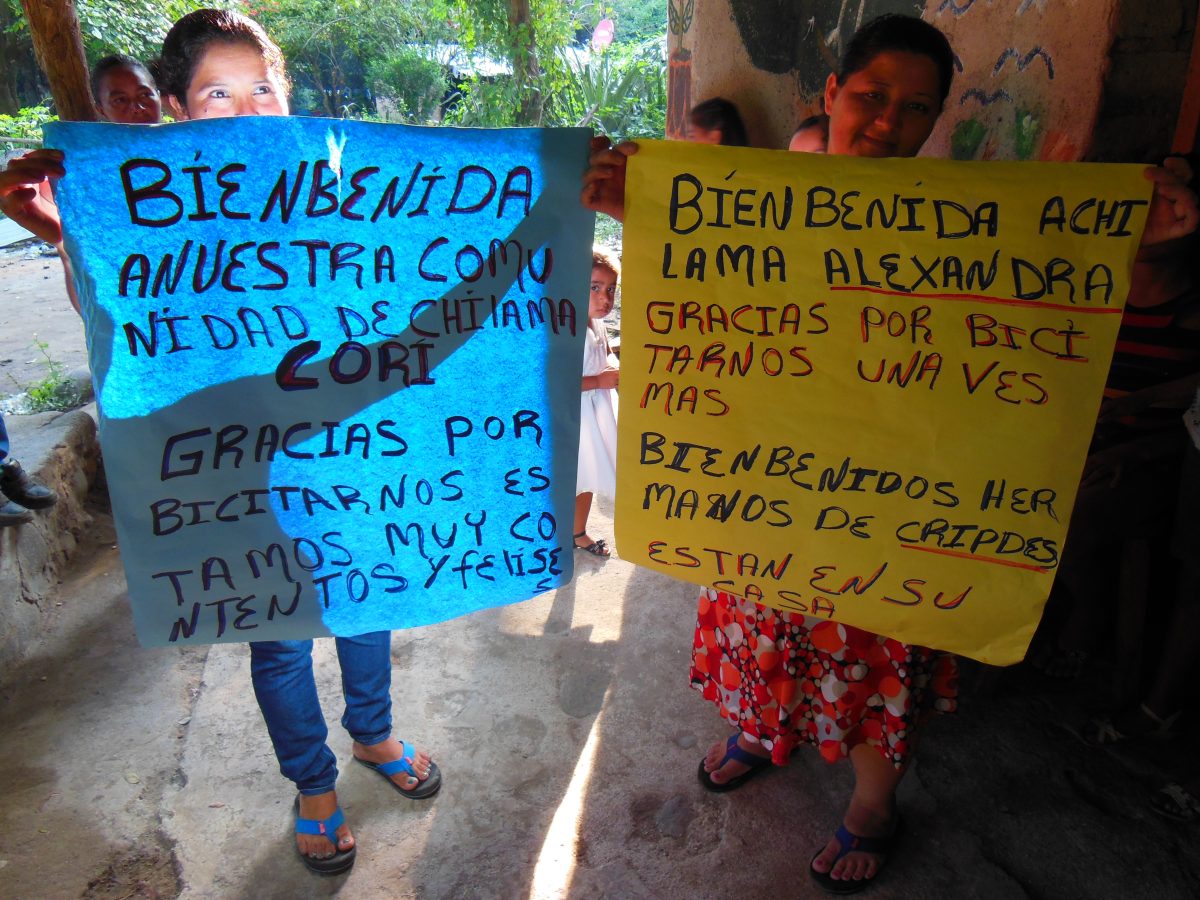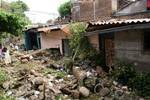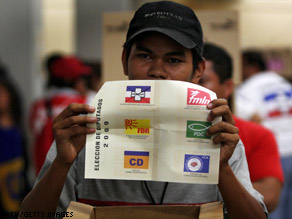Get Involved, News from Communities
First Days in Chilama, La Libertad
From our volunteer Cori Ring-Martinez’s blog, Learning from Mi Pueblo. Check it out for more updates on Chilama and El Salvador!
As I mentioned in my previous post, I have been in El Salvador now for two months, and I have spent the majority of that time in La Libertad, the department south of San Salvador, in the community of El Charcon. Now, I will spend another month and a half in the community of Chilama, which has been sistered with a Sister Cities committee in Crystal Lake, Illinois for the past decade or so. Chilama is much different from El Charcon for a few reasons. Most of the difference is surface level – Chilama does not have all the “flashy” development projects that El Charcon has, like the playground, paved road, or the water project that guarantees water to every family in El Charcon. One reason for the difference is the timing – El Charcon has been organized and working with CRIPDES and Sister Cities since the 80s, whereas Chilama only began working with CRIPDES and Sister Cities a decade or so ago. However, perhaps the biggest reason for the discrepancy can be found in the old adage “location, location, location.” El Charcon is very easily accessible by any standard; the community is right next to the big coastal highway. It only takes around 5-10 minutes depending on where the house is in the community to reach that road, and only another 10 by bus to get to the Puerto. In contrast, Chilama is much harder to reach, although there is a 20 min bus ride that will get you from the Puerto to the road that leads to Chilama. The community is basically in a giant hole (ok, valley) and the road to access the community varies in conditions from poor to very poor, depending on the rain.
The road/access issue is probably one of the biggest reasons Chilama has not had any big development projects come from the outside, as well as a determinant in why so many people are out of work. In El Charcon, for example, the accessibility hugely impacts the job prospects of the population – most of the community board meetings have to be conducted in the evening to ensure people are home from work. In contrast, Chilama has very few people who are employed, and the ones who are have a difficult commute, depending on where their job site is. For example, my new host mom’s husband Chalo works as a security guard for a nightclub in San Salvador – an awesome gig in comparison to many, because they have private health insurance and a steady source of income, although it is not enough for the family to afford to eat vegetables, for example. The commute and nature of his work means that Chalo splits his time between San Salvador and Chilama, spending every other night at home.
I arrived Wednesday afternoon to a very large and surprise welcome – I don’t know exactly how many people were there but it was a lot! There was a lovely dance showcase with kids and women participating, and we all ate some yummy tamales afterwards. Once the general assembly was over, we met with the junta directiva to talk more specifically about the logisitics of my stay, as well as some other topics surrounding Sister Cities work in the community. Alex, the Sister Cities co-coordinator who works with La Libertad, explained the model that Sister Cities uses to assign projects. Typically, there is a project dedicated to infrastructure within the community, and another one dedicated to fortifying the organizational structures in the community. This year, the infrastructure project was supposed to buy land for cow grazing, but it fell through, so there is a budget surplus for a project in the community. The organizational project was a series of workshops held throughout the year, the latest of which have been one on Reproductive Health and Sexuality for teenage girls, which ended being multi-generational but awesome, and a workshop on Masculinity for the men in the community.
The projections for next year’s projects have begun, and Alex (the Sister Cities coordinator that works with Cripdes Sur) talked to the community board about their ideas for a new project, especially considering the surplus from the failed land buy. One project that Alex suggested was a huerto casero project, where a group of women are trained and supplied to begin small vegetable gardens. This project has already been very successful in two other Cripdes Sur communities, with funding by SHARE, another solidarity organization that Cripdes works with. The project combines both infrastructure (food security) with organizational fortification and women’s empowerment (the machista culture has many women convinced that they are incapable of being agricultural producers). The next meeting with the community board, we will discuss any project ideas they have, and if they want to go ahead with this garden/agriculture project.
Thursday was my first full day in Chilama, and after a lovely night’s rest (we stayed up way too late playing Los Izalcos, even playing when the lights randomly went out!) the first thing we did was go swimming in the river. There are a lot of children in Chilama, more than in other communities, and they all seems to be excellent swimmers! It is no wonder why – my host sister, Joana, began swimming at the age of 4, and she is like a fish in the water. There are huge trees (not sure what kind) and these Tarzan-like vines that kids will swing into the water with. Later, we ate lunch and rested, before walking back to the community meeting house, where Mari and another community board member Rosita met to make skirts to sell. They are teaching themselves to sew, a useful skill that also holds the possibility of supplementing their husband’s incomes. Mari also sells mangoneadas, which are frozen fruit pops with hot sauce and other spices mixed in (I can’t have any because she makes them with tap water). We were interrupted however, by a meeting that Mari hadn’t heard about, surrounding the legalization of the water that Chilama currently (and illegally) receives from a 20 year old project servicing the neighboring community San Rafael. The rest of the day I spent playing with the girls, teaching them how to make Rainbow Loom bracelets (all the rage with the 9 year old set) and painting nails. Friday morning I had to go into the office, and I experienced an intense morning workout. I clocked it between 15-20 minutes of extremely vertical uphill walking to get from Mari’s house near the town center and the side of the road where the bus comes. I was sweating profusely, thankful I bathed even though it was basically a futile exercise, and Joana and Maritza, who make that climb/walk every day to go to school, barely broke a sweat!




